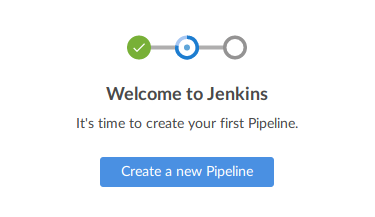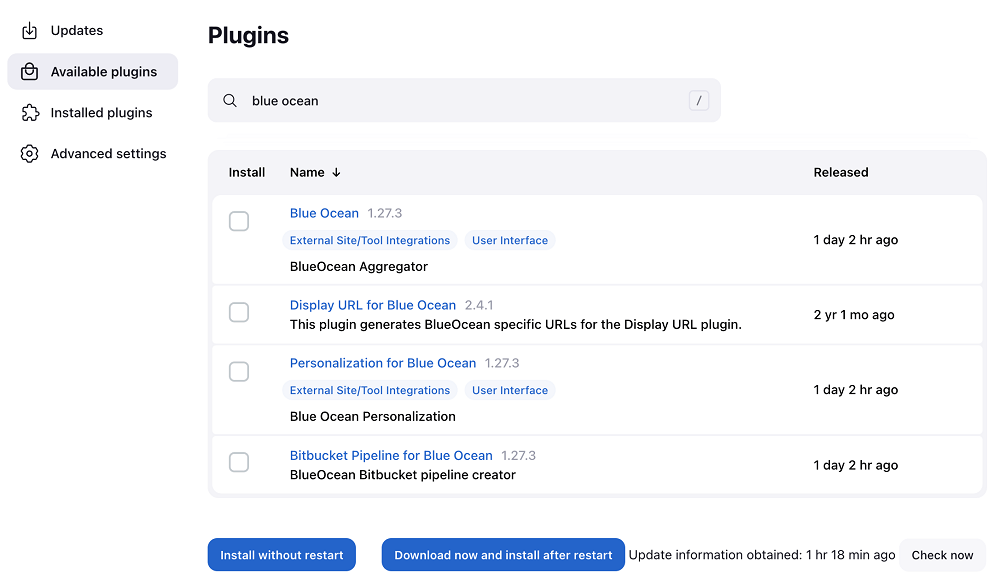Getting Started with Blue Ocean
| This is a guest post by Liam Newman, Technical Evangelist at CloudBees. |
Welcome to Blue Ocean 1.0!
In case you’ve been heads down on other projects for the past 10 months, Blue Ocean is a new user experience for Jenkins, and version 1.0 was released today! Blue Ocean makes Jenkins, and continuous delivery, approachable to all team members. I’ve been working with it for the past several months, and I can tell you it is amazing. I wish all the interactions with Jenkins were as easy as this:

10 minutes to Blue Ocean
Blue Ocean is simple to install and will work on basically any Jenkins 2 instance (version 2.7 or later). Even better, it runs side-by-side with the existing Jenkins web UI - you can switch back and forth between them whenever you like. There’s really no risk. If you have a Jenkins instance and a good network connection, in 10 minutes you could be using Blue Ocean.
-
Login to your Jenkins server
-
Click Manage Jenkins in the sidebar then Manage Plugins
-
Choose the Available tab and use the search bar to find Blue Ocean
-
Click the checkbox in the Install column
-
Click either Install without restart or Download now and install after restart

After you install Blue Ocean, you can start using it
by clicking on Open Blue Ocean in the navigation bar of the
Jenkins web UI, or you can navigate directly to Blue Ocean by adding
/blue to your Jenkins URL, for example https://ci.jenkins.io/blue.

If you have to go back to the "classic" Jenkins UI, there’s an "exit" icon located at the top of every page in Blue Ocean.
Dive in!
That’s it! You now have a working Blue Ocean installation. Take a look around at your Pipelines and activity, or try creating a new Pipeline. I think you’ll be pleasantly surprised at how intuitive and helpful Blue Ocean can be. Blue Ocean is so cool, I never want to leave it. Over the next few days, I’ll be publishing a series of videos, showing some common Jenkins use cases and how Blue Ocean makes them clearer and easier than ever before.
Stay Tuned!